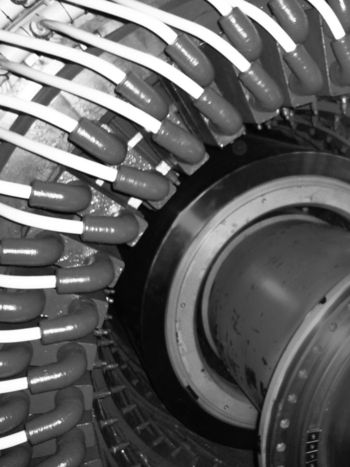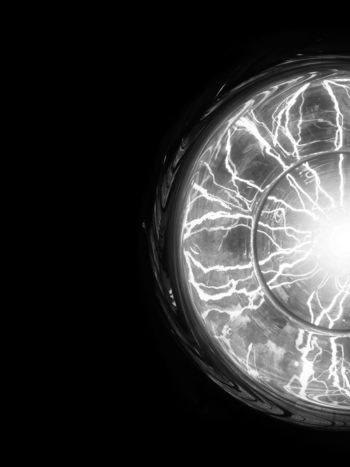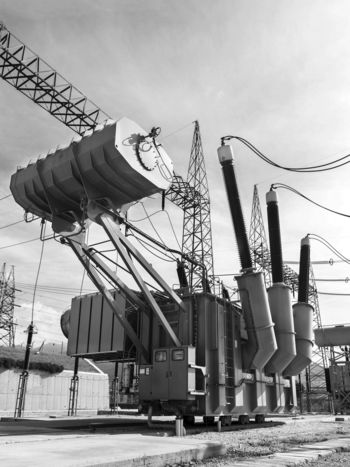Installation of High Voltage (HV) Cable Systems
Technical Brochure 194 “Construction, Laying and Installation Techniques for Extruded and Self-contained Fluid Filled Cable Systems” was published by WG 21.17 in 2001. The main purpose was to describe the Cable System, the Construction Techniques and the Cable Installation Design and Laying Techniques for high voltage cables.
Members
Convenor (IT)
S. CHINOSI
Secretary (US)
J. BUSBY
M. CHOQUETTE (CA), S. LLOYD (GB), J. MARTIN (IE), R.R. HIDALGO (ES), P.V. VELZEN (NL), W. MOKANSKI (PL), M. GENOVESI (IT), C. BARROSO (PT), K. TSE (DE), L. GERVAISE (FR), R. STELLA (FR), D. VISAGIE (ZA)
Corresponding Members
P. ROBINSON (AU), M. STOBART (CA), T. IMAMURA (JP), D. PARMAR (US), L. WONG (BR), J. STEVEN (GB)
Introduction and background
The recommendations adopted in TB 194 were prepared considering the conductor cross-sections available at that moment, mainly up to 1200 mm². The use of cables with extruded insulation and larger cross sections has become usual in the recent years and it appears that the effects of the thermo-mechanical forces on extruded insulation and conductor cross-sections considered 20 years ago need to be better considered.
With the purpose of studying in detail the above issue and give recommendations about the approach to be used when dealing with extruded insulation and large conductor cross-sections, a dedicated Working Group (B1.34) was established, which produced in 2016 the Technical Brochure TB 669 “Mechanical forces in large cross section cable systems”.
During their 2016 plenary Annual Meeting (August 23rd, 2016), the members of SC B1, following a proposal from the Strategic Advisory Group, unanimously decided to launch a new Working Group, entitled WG B1.61 (Installation of HV Cable Systems) to update the TB 194, considering the work of several Working Groups/Task Forces and also considering the work done by WG B1.34.
Technical Brochure scope and document structure
The new Technical Brochure includes an update of the civil construction and cable installation techniques according to state-of-the-art methods, a collection of design rules for calculating thermo-mechanical forces and pulling forces and includes discussions regarding electrical system design. The revisions also took into consideration recent CIGRE SC B1 works such as TB 640, TB 669, TB 770, TB 714, TB 841, and TF B1.53. WG B1.61 also conducted a survey which covered the various construction and cable installation aspects adopted by the industry over the past 10 years.
TB 194 differentiates between “construction techniques” and “installation techniques” which were defined as follows:
- “Construction Techniques” are techniques used to create the cable route, mainly covering the civil works such as trenching; and
- “Installation Techniques” are aspects related to cable system design and cable installation methods.
WG B1.61 discussed the above definitions from TB 194 and the possibility of leaving them separated under different sections in the new TB or whether to combine them into a common chapter. With the aim of treating both the construction technique and the installation technique for each specific topic, it was decided that the structure of the new TB would combine them into one common chapter named “CIVIL CONSTRUCTION AND CABLE INSTALLATION TECHNIQUES”, separating the thermo-mechanical design and the pulling calculation topics into a separate chapter named “SYSTEM DESIGN PRINCIPLES”.
The new Technical Brochure is broken down into the following chapters:
- CHAPTER 1: Introduction
- CHAPTER 2: Materials description
- CHAPTER 3: Civil construction and cable installation techniques
- CHAPTER 4: System design principles
- CHAPTER 5: Appendixes
Below is a brief description of each chapter.
CHAPTER 1: INTRODUCTION, provides a brief description of the background for the new TB, the terms of reference used, outlines the structure of the new TB, briefly compares the new TB to the previous TB 194, and provides a high-level description of the market survey performed as part of the work. The results of the survey are outlined in Appendix D of the new TB.
CHAPTER 2: MATERIALS DESCRIPTION, provides an overview of the various components which make up a high-voltage underground cable system, how the components are related to one another, which civil construction and installation technique they are applicable to, and further discusses the importance of a high level of quality assurance and personnel training.
CHAPTER 3: CIVIL CONSTRUCTION AND CABLE INSTALLATION TECHNIQUES, discusses the various civil construction and cable installation methods used for high voltage cables systems and includes, with respect to TB 194, some new technologies as well as a list of hazards for high voltage cable installation, which may arise from poor design and/or installation techniques.


